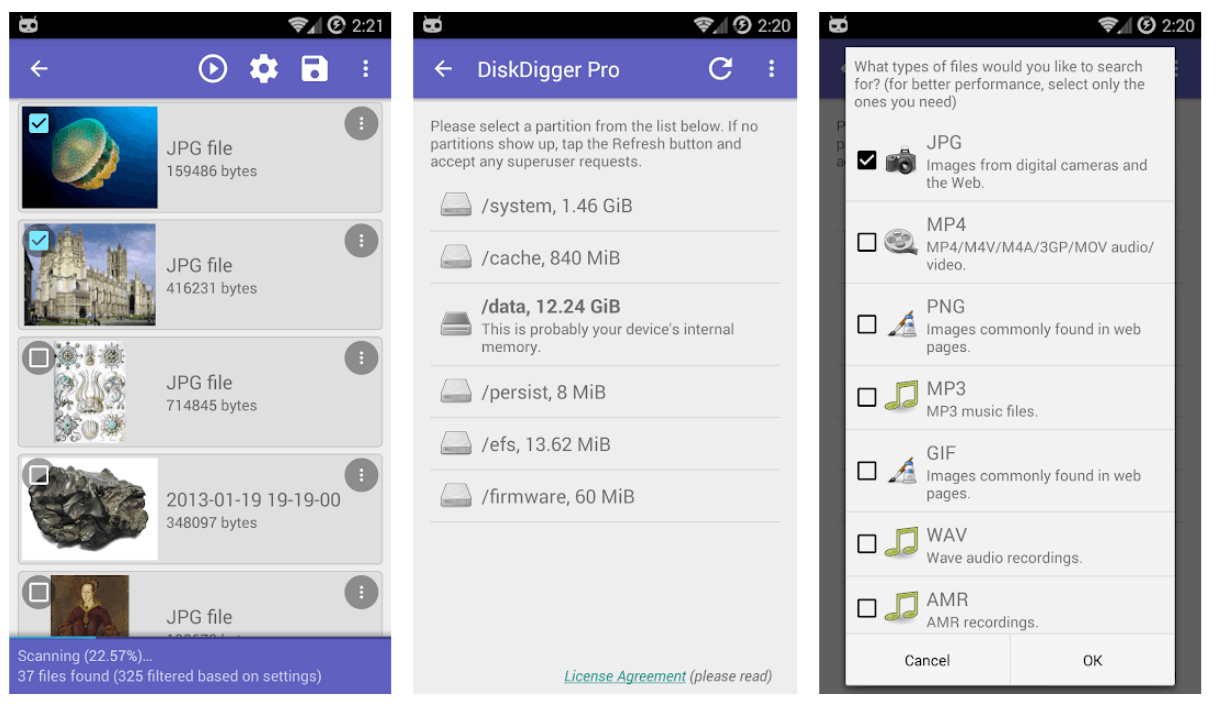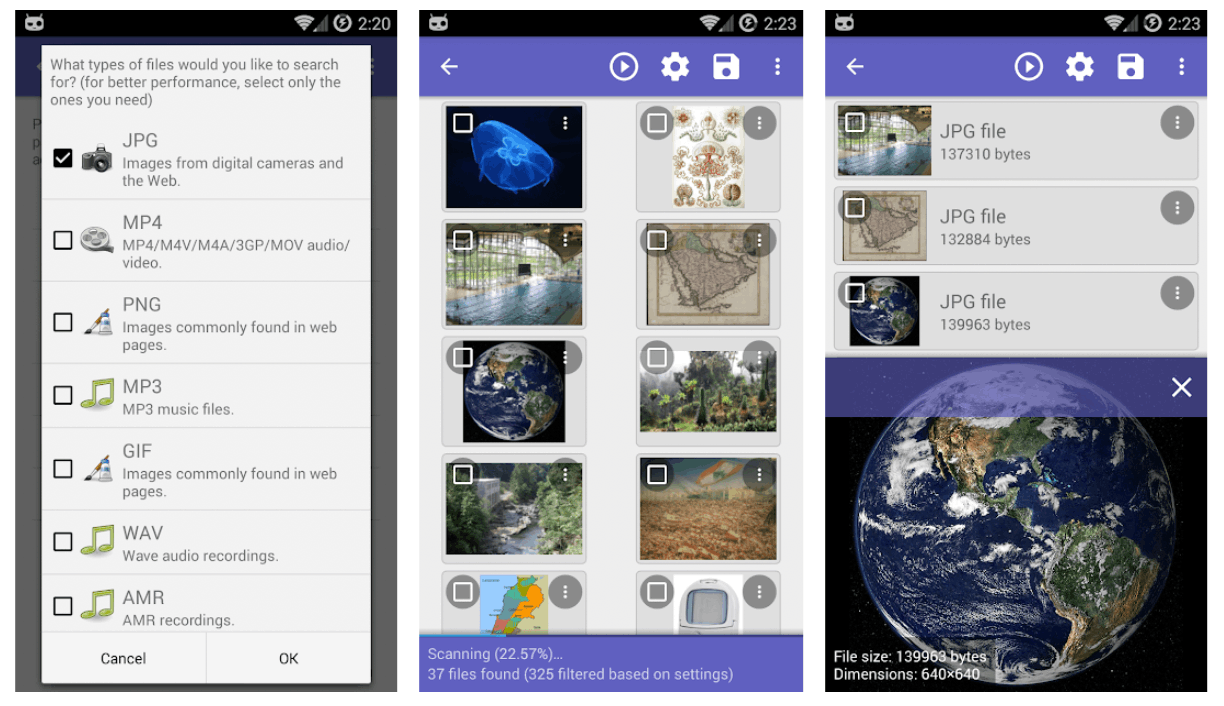I often forget to backup my photos on my mobile device to cloud storage. There are instances that I deleted some files without backing them up, so I had to accept that I had lost them forever as there is no that I could recover them. Or so I thought.
This problem lasted until I discovered the DiskDigger app, which focuses on recovering unintentionally deleted photos. It has features and options for undeleting these files and recovering them safely to my file storage.
Aside from recovering photos, DiskDigger also offers several file management options. Learn more about the DiskDigger app and how I recovered my photos through the app.
- Discovering DiskDigger - The Photo Recovery App
- Learning About DiskDiggers’s Privacy Features
- Exploring the DiskDigger App
- Utilizing the Basic Scan Option
- Scanning for Recoverable Files
- Recovering the Files

Discovering DiskDigger - The Photo Recovery App
When I accidentally formatted my internal memory storage, I did not know how to recover photos files. It was a struggle because I had not backed it up properly to my cloud storage because I was not using the auto-sync feature.

I looked for ways to recover the photos, but I was not successful. A friend mentioned that he use an app whenever this problem occurs. So, as recommended, I looked up the DiskDigger app and checked if I can successfully recover the media files.
The DiskDigger app describes itself as a photo recovery app. Users can easily undelete and recover lost photos and other media files from an external memory card and local file storage of a mobile device.
Defiant Technologies, LLC understands that losing files unintentionally or accidentally is common. Thus, they developed the DiskDigger app, which they launched in June 2012, so that people will have a way to recover and access these photos again.
Installing the DiskDigger App
I immediately trusted the DiskDigger app because of its high user rating and excellent user reviews. Moreover, more than 100 million people have downloaded the app, which is great proof of the app’s reliability and effectiveness.
People trust the app because Defiant Technologies, LLC constantly updates the features for a more effective and safer recovery process. The team behind the app designed DiskDigger for Android devices only.
Thus, the DiskDigger app is only available to be downloaded from the Google Play Store. I did not pay for installing the app as DiskDigger is entirely free. However, DiskDigger requires mobile devices to be running on Android OS 4.1 or up for a better user experience.
Learning About DiskDiggers’s Privacy Features
I do not easily install an app, especially those that can access or process my local files, such as photos and videos. I understand that there is always a constant risk of potential threats to data privacy.

However, I did not have a problem trusting the DiskDigger app because of the number of people who are already using the app. Moreover, DiskDigger explained its Privacy Policy upon installing the app on my mobile device.
The app mentioned that it is only focused on recovering the deleted photos, videos, and even sometimes document files. It does not collect personal information from the users’ devices or any user accounts.
As proof, the DiskDigger did not require me to sign up or create an account to use its features and recovery options. Moreover, the app does not save the photos or files they recovered on their database, so DiskDigger does not copy my private files.
Granting Permissions to DiskDigger
Upon installing the DiskDigger app, it asked me to grant permission to access my mobile device’s files, folders, and features. It is a given that the app will ask to read the contents of my local file storage, wherein it can modify or delete any of the content.
DiskDigger wishes to access my original gallery file to read the content and check my photos and other media files. I also allowed the app to modify or take action as necessary for a successful recovery of the lost files.
Aside from the photos and local file storage, DiskDigger wants to view my network connections and have full network access as the app runs using an internet connection. In addition, the app will run at startup, and it can prevent my mobile device from sleeping, especially during the recovery process.
Exploring the DiskDigger App
I liked the DiskDigger app because it is focused on its objective—to recover lost photos. When I first launched the app, I was surprised with how simple the home page is as it only has the main features and options that DiskDigger offers.

As seen on the app’s home page, there are three main things it can do to my mobile device’s file storage. First, I can use the Basic Scan option for surface-level scanning of my cache and thumbnails.
The second option requires rooting my mobile device. The Full Scan option will only be available if I grant the DiskDigger app the root access of my internal memory. I will not miss out on any of the lost photos or files with this option.
Lastly, the Wipe Free Space feature lets me delete files permanently after scanning them. If I deleted files through this option, there is no way I can recover them in the future.
Identifying the Files to Recover
Before running the scan, the DiskDigger app asks me to identify what types of files I would like to search for among the deleted files. This option will make the scanning process shorter and more efficient. The app also noted that it will run better if I limit the files.
I can choose whether I want to access JPG or PNG files for images. The app provided short explanations for each file type, such as JPG are images from digital cameras and the web, and the PNG files are images commonly found on the web pages.
Utilizing the Basic Scan Option
The Basic Scan looks for the cached versions and thumbnails of my saved photos. It means that it can access these thumbnails by checking and scanning the cache saved in my internal or external memory.

The DiskDigger app will determine which cached photos are not currently saved on the gallery. With this, the app can identify the lost files and recover them easily. However, the Basic Scan can only detect image files.
The only problem with Basic Scan is that the recovered photos will only be the lower-resolution copies of the original photos. The app only bases the recovered photos on low-quality thumbnails and caches.
Doing a Full Scan
DiskDigger mentioned that recovering the original size or quality of the photos is available on the Full Scan option, which requires rooting. Rooting allows the app to have administrative access on my mobile device.
DiskDiffer can conduct a thorough or deep scan of my phone’s internal memory with the root access. If I decide not to give the app root access, the Full Scan option will not be available.
However, the app mentioned that I have to understand that root access has some risks. Android devices are rooted to reduce the risk of any malware attack, and giving external app root access might lower the defensive wall during rooting.
Scanning for Recoverable Files
I only need to click “Start Scan” to run the Basic Scan or Full Scan option. As expected, it will take a few minutes to finish the scanning process. It will be relatively long if the saved cache files are large.

As soon as the app identifies some lost or deleted photos, it will display the images on the screen. I can see the photos to confirm if those are the correct files I wish to recover. After the scan is completed, it will report how many recoverable files are there.
Moreover, the app offers an option to limit the files it will search, including the thumbnail size (small, medium, or large). I can also indicate the minimum file size in terms of bytes. Limiting the search based on the minimum and maximum file date is also possible.
Knowing DiskDigger Pro
The DiskDigger app is made solely for photo recovery. The app introduced me to a relative app called DiskDigger Pro, in which I can recover other file and document types.
On DiskDigger Pro, I can recover video, audio, and document files. For example, if I accidentally delete a presentation file. I can easily recover it through DiskDigger Pro as it scans files with the following formats: DOC, XLS, PPT, PDF, XPS, and many more.
If I want to recover other files, I have options for audio and video like MP4, WAV, AMB, GIF, MP3, and many more.
Recovering the Files
The app mentioned that when the recoverable files are shown, I can put a check box on the files I want to recover. Then, I need to click the “Recover” button at the bottom of the screen. There will be a pop-up alert asking me how to recover the files.

There are three main options for eventually recovering these lost files. First, the DiskDigger recommends saving the files to another app on my mobile device like cloud storage (Dropbox, Google Drive) or email and messaging apps.
The second option lets me save the files to a custom location on my file storage. The app stated that I will be the one to find the files after saving them, which is alright because I already created a folder meant for recovered files.
Lastly, I can upload the files to a file transfer protocol (FTP) server. I can only do this if I have access to that FTP server.
Cleaning My File Storage
Aside from recovering the lost photos, I can also free some storage space through the DiskDigger app via the Clean Up button.
The app automatically groups the related thumbnails and photos on the local file storage. I can delete the files permanently if I have no intention of recovering them eventually. This frees up the space on my local file Storage.
Conclusion
The DiskDigger app is a reliable solution whenever people accidentally delete photos. It scans for the thumbnails and caches files on the internal and external memory to be recovered. The app can also do Basic Scan and Full Scan.




